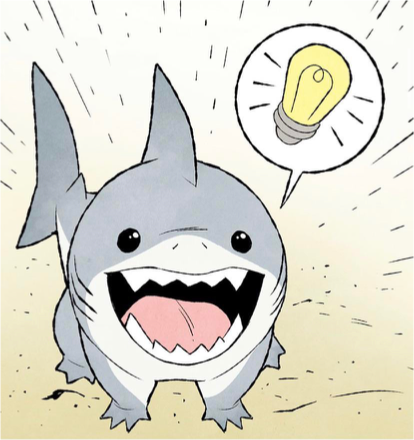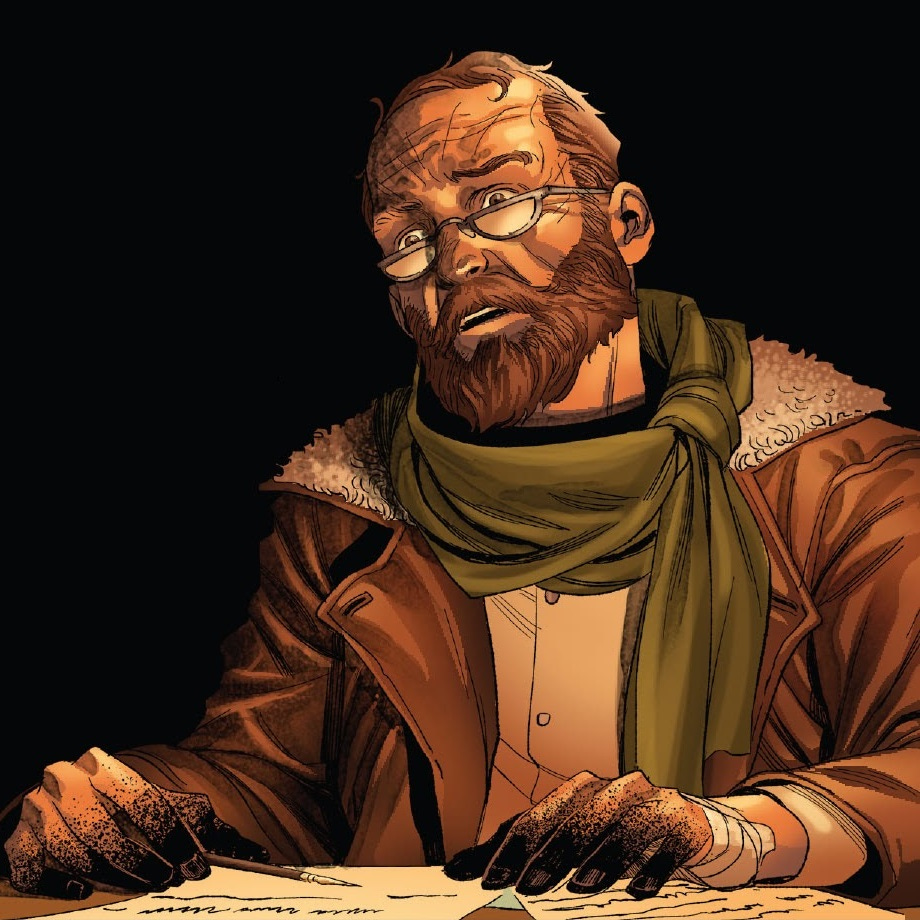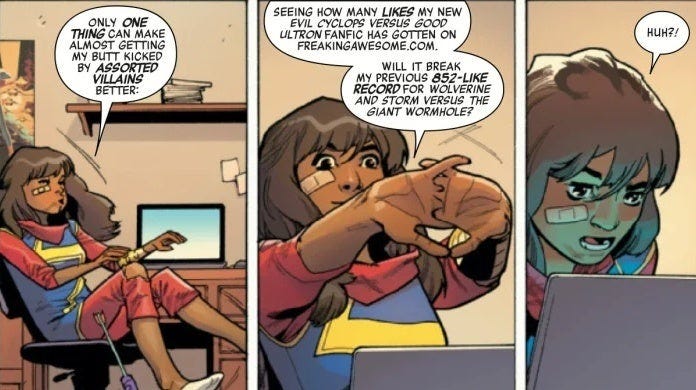How to write issue number one
Advice from comic writers on crafting the perfect first issue
Editor’s Note: It’s Wednesday, so that means it’s New Comic Book Day and another edition of Amazing Journey!
The Amazing Journey column will touch on a comics-related topic, such as writing the first issue of a series, what it’s like to run a comic book store, working with artists, and how writing comics is different from writing prose.
Spring 2020 was a weird time for me to decide to want to be a comic book writer. But after listening to Jonathan Hickman discuss how he rebooted the X-Men with House/Powers of X during a five-hour Comics Experience master seminar, I somehow came away with thirty pages of notes that would be the spark for a new writing journey.
With one fantasy book under my belt and another in progress, I had the basics of storytelling down and thought it would be a simple transition from prose to comics.
Three and a half years later, and I’ve learned that it’s not so simple!
I’ve been doing a lot of reading, learning, and listening during this time, but to really level up my craft, I turned to industry veterans to ask for the one piece of advice they would give someone sitting down to write their first issue.
Note: This post is very long and will probably get truncated by your email client. If you want to read the whole thing, click here.
Big Picture
“What would YOU like to read more than anything, what are you aching for? Write that. Other people will be aching for it too.” - Kelly Thompson (Black Cloak, The Cull, Birds of Prey, Captain Marvel, Black Widow). Check out Kelly’s Substack newsletter at
.“Why are you telling this story? If it’s because you’ve looked around and tried to guess what kind of series ‘the marketplace’ wants right now, your project will most likely fail… but if you’ve looked deep inside yourself to find something that you NEED to write about, regardless of whether or not others might ever want to read it, you will truly succeed (even if your series only lasts that first issue).” - Brian K. Vaughan (Saga, Paper Girls, Y: The Last Man, Ex Machina, Pride of Baghdad, Spectators).
“The best thing you can do when you’re starting is write -- get it out, then put it aside for a week. Or more. When you look back at it with fresh eyes, then you’ll be able to hone your rough script into the story you’re hoping it will be.” - Pat Shand (Destiny, NY, Prison Witch, Smoke Weed, See the Future, Azza the Barbed, Mixed Magical Martial Arts, Vixx the Hunter).
“The most important thing about first issues is you have to make readers want to come back for the second. Even if your story is a slow burn, you have to have a hook that’s strong enough to make them absolutely have to read what comes next, even if they have to wait a month to do so.
So don’t hold back - if you’re writing an action story, give them great action - if you’re writing a mystery, go ahead and set the scene, but by the last page, get to the heart of it.
Don’t save all your killer ideas for later issues - start out with a really strong one, and up the ante from there with every issue that follows.” - Rich Douek (Heartpiercer, Drive Like Hell, Road of Bones, Wailing Blade, Magic: The Gathering, Sea of Sorrows). Check out Rich’s Substack newsletter at
.“It’s as much about what you don’t see as what you do see. Your job is to give readers just enough detail that the movie starts playing in their mind and they fill in the information between the panels themselves.
Give too much, and readers get bored. Give too little and they lose the plot.
Great comic book writing strikes the perfect balance between what you show and what you hide.” - Russell Nohelty (Ichabod Jones: Monster Hunter, Cthulhu is Hard to Spell, Black Market Heroine, Pixie Dust, Katrina Hates the Dead).
“The best first issues tend to do two things, which I unhelpfully describe as ‘First It’ and ‘Second It.’ The First It is includes everything which I would describe as good writing (good writing, for comics, includes everything, not just the words – it’s also art, design, etc). . . . In short: most of First It is actually The Pitch – or rather, showing you can competently execute The Pitch.
The Second It is giving the reader something that wasn’t in the pitch. This normally speaks to the actual truth of what the book actually is, or at least gives a sense of the book’s direction. It can be a big huge genre twist, but it doesn’t have to be that large. But it does have to be something.” - Kieron Gillen, On First Issues (The Wicked + The Divine, Immortal X-Men, Eternals, Young Avengers, DIE, Once & Future).
“Any writer who is considering getting into comics should know that the first issue is the tone setter; it’s the place to make a few promises, introduce your characters, and a few of the stakes. While you don’t want to waste an opportunity to make a good impression, remember, less is more.” - J.L. Johnson Jr. (Ennead: The Rule of Nine).
“The first issue of a series needs to do two things: it needs to introduce the hook and the characters of the series and also set the template and expectations of what an issue of ‘Sexy Snowmen’ will be like going forward.
It also needs to have a killer hook/ cliffhanger so that people want to get the second issue of the series.
If you’re doing it on Kickstarter or not for a publisher, where you don’t have a limit, give yourself a few more pages if you need them. The first issue of Saga was 44 pages. The first issue of Paper Girls was 40. So Brian K. Vaughan has no qualms about expanding a bit. The goal is to really hook people. And get them invested in the world. Sometimes you need a bit more time to do it.” - Charlie Stickney (White Ash, The Game, Glarien of White Ash, How I Slept My Way Through College).
“If I were writing the first issue of a new series, I’d be sure to have all the ground work done first, write solid characters, arcs, an outline, world building and theme before jumping in! Having a roadmap before you start writing that first issue will make things a lot easier for you.” - Curtis Clow (Beastlands, The Wild Cosmos, Slightly Exaggerated).
“Make sure to have a killer cliffhanger! All the best first issues should leave the reader hungry for more, so try to end your issue at just the right moment to build excitement for issue two and beyond!” - Phil Falco (Haunting, Slice of Life, The Beast + Snow). Check out Phil’s Substack newsletter at
.Page-by-page
“Just because a reader consumes your work sequentially, it doesn’t mean you have to write it sequentially. I write out of order all the time — ‘dessert first’ is usually how I operate.
Write what sparks your imagination first, no matter where in the narrative it comes in. Then start thinking about where you want to end your first issue, and once you lock that in, work your way backwards.
If you’re ever stuck on a scene, you’re allowed to skip it for something easier — I do that all the time! Momentum is ultimately the most important thing to getting a script finished, so whatever it takes for you to build that momentum is the best thing you can do.” - David Pepose (Captain Planet, Space Ghost, Cable: Love and Chrome, Moon Knight: City of the Dead, Punisher, The Devil Wears My Face, Savage Avengers, The O.Z., Scout’s Honor).
“Do a page-by-page breakdown of each page of your issue. I didn’t for mine, and then faced the problem of having 4 pages left and 7 pages worth of story. My other advice is to always remember that one of the things that makes comics unique from prose is you have absolute control of where on the page your thoughts will land, so make sure they land well - and use that page turn for some big reveals.” - Ryan North (One World Under Doom, Fantastic Four, Danger and Other Unknown Risks, The Unbeatable Squirrel Girl, Adventure Time).
“My writing partner [Jackson Lanzig] and I got some advice when we were just starting out, and I will now share that advice with you: always kill someone on page one.
Now, while I’d never say to take that advice literally, the intention is absolutely spot on: your story doesn’t need to start at the beginning--it needs to start at the moment that is going to draw the reader’s attention and not let go.
You may only have those first few pages to convert them from a browser to a buyer, so--whether by action or drama or spectacle or mystery--your one job is to make the reader care. And then, on every page afterwards... you do it again.” - Collin Kelly (NYX, Guardians of the Galaxy, Captain America, Star Trek, Kang the Conquerer, Outsiders, Thunderbolts).
“If you have the luxury of time, write beyond your first issue -- as far as you can stand, but try to get through Issue 3 at least -- and then go back to #1 and revise it.
Even if you outline you will learn about your story by writing it, and by going back over your #1 you can seed things you hadn’t discovered when you wrote your first draft.
If you’re not also doing the art, do thumbnails as you script! This will help you make sure the flow works, you don’t have too many panels per page, and it’ll save your artist some grief.” - Honor Vincent (Andraste, New Rat City, Grimm Fairy Tales: Myths and Legends - The Black Knight, Holmes & Houdini).
“Figure out what writing process works best for you. Are you a planner? Work out a concrete beat sheet. Do you like to free write? Then work on the characters’ voices before you fully outline. But always have an outline to go back to. It’s the best road map to have if you ever feel lost.” - Kat Calamia (Like Father, Like Daughter, Slice of Life, The Dancer, The Beast & Snow).
Phew! That’s a lot of great advice. Thanks so much to everyone who contributed!
But we’re not done yet. Below are some other great resources to check out on your quest to writing issue one.
Kieron Gillen’s Comics Writer Master Post
The 5 biggest mistakes writers make when turning their books into comics (paywall)
SKTCHDxTiny Onion: David Harper interviews James Tynion IV on craftitng a debut (paywall)
Comics Experience Guide to Writing Comics by Andy Schmidt
Make Comics Like the Pros by Greg Pak and Fred Van Lente
If you enjoyed the article, consider picking up a copy of my fantasy adventure comic, Blood of Atlantis, from my online store!
Amazing Journey back issues
True believers unite (#1) | My comics origin story (#2) | Comic event series (#3) | The comics of Kickstarter (#4) | Single issues or trades? (#5) | From prose to comics (#6) | Adapting a celebrated fantasy series into a comic (#7) | Charting a career in comics (#8) | Comic book spoilers (#9) | Lessons from Kieron Gillen’s masterclass (#10) | Comics marketing 101 (#11) Designing memorable characters (#12) | The importance of comic book shops (#13) | Finding community at NYCC (#14)









